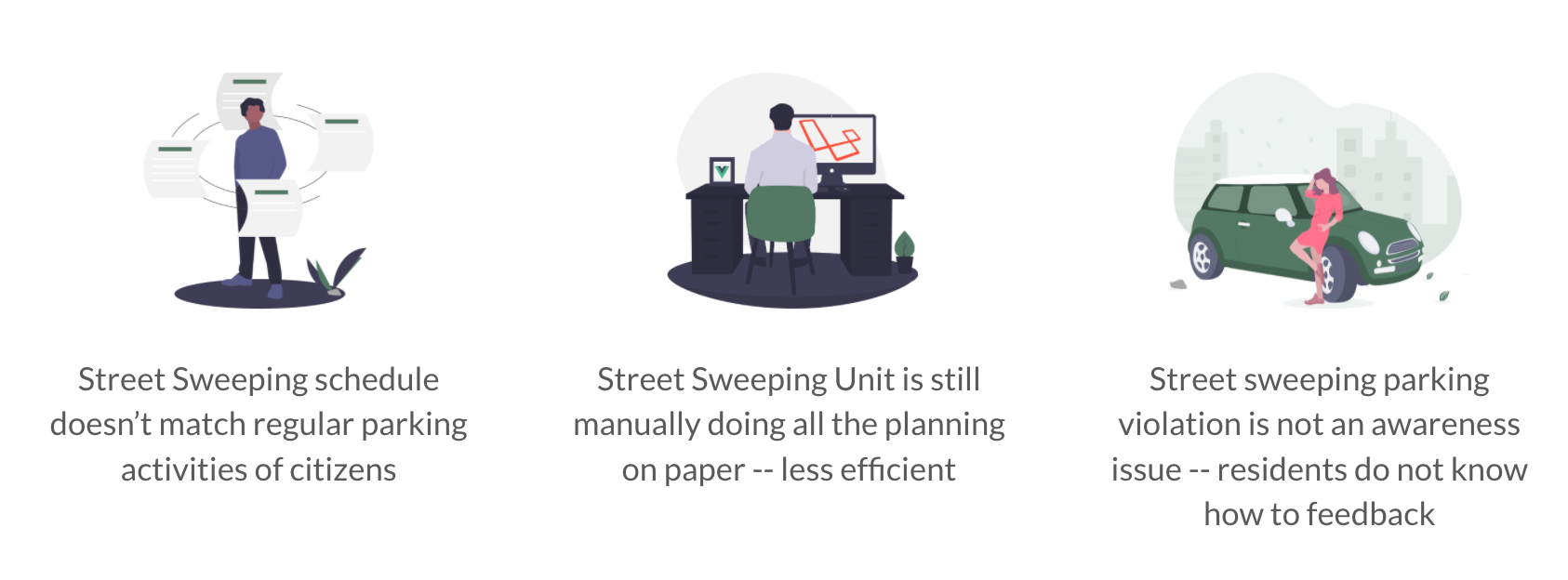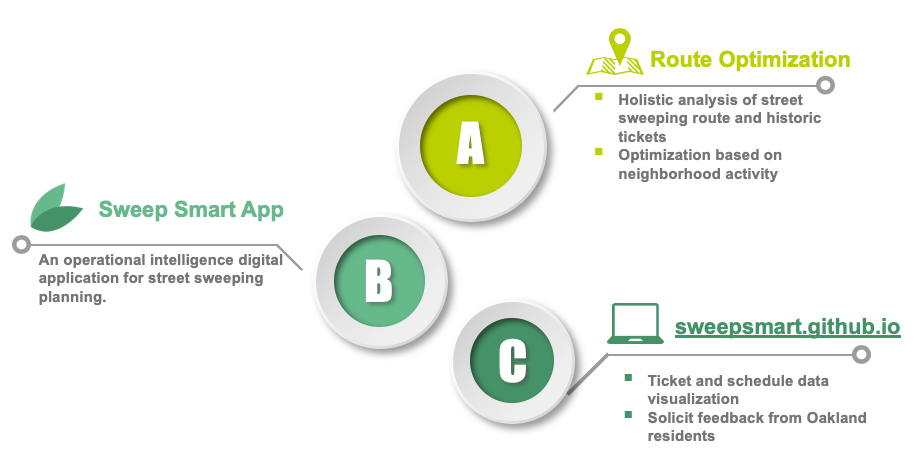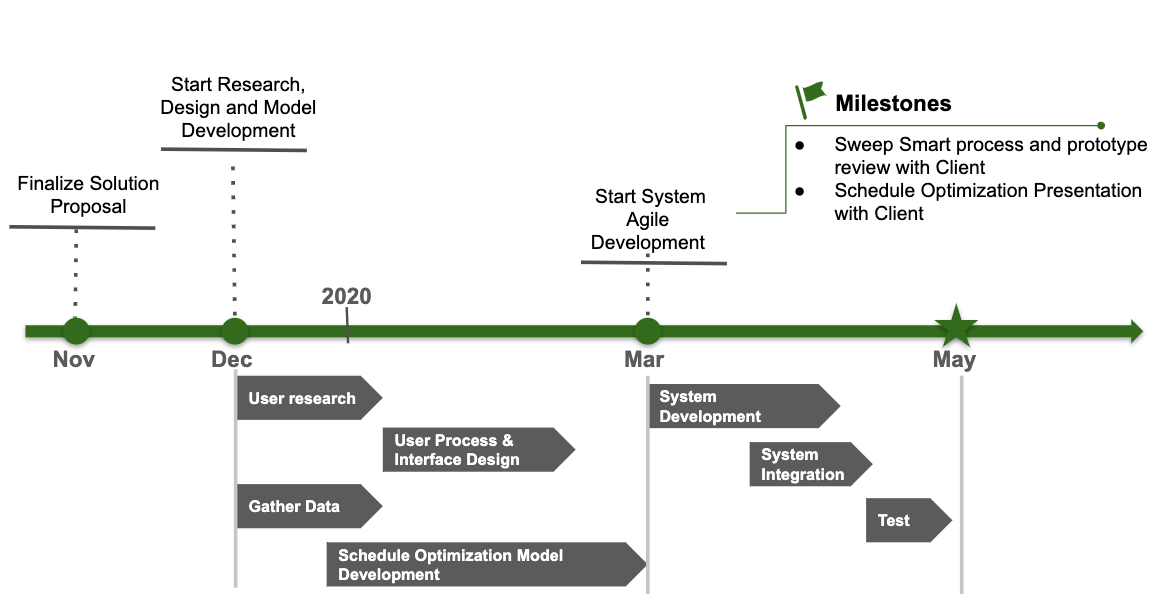Sweep Smart
The Problem
The Department of Transportation (DOT) of the City of Oakland oversees the parking violation management of the city. DOT aims to manage parking in ways that achieve the City of Oakland’s overarching goals for economic growth, environmental responsibility, and social equity. Over the past years, street sweeping parking violations have contributed to more than 50% of the citations issued. The city and DOT would like to understand how to better manage street sweeping to minimize interruption to the local community and maximize the efficient use of a public resource.
The Goals
Sweep Smart is a street sweeping digitization and optimization tool for the city of Oakland. By utilizing the team’s background in machine learning, data science, data visualization, user research, and product design, the tool aims to integrate historical data of parking violations and parking space occupancy to recommend street sweeping routes and schedules to minimize potential street sweeping associated parking violations. We aim to:
- Create a clean and organized environment for residents while minimizing interruption to the local community
- Enhance operational efficiency of City of Oakland
- Build useful and trustworthy technology to serve people and society
The Users and Their Painpoints
The primary users as well as the key stakeholders during our user research and design feedback iterations are:
- Residents of the City of Oakland
- Street Sweeping Planners, Supervisors and Operators
- Transportation Department Planners and Operators
Based on several rounds of user research conducted with different groups of stakeholders, we have identified the following major pain points:
The Solutions
Based on the pain points, we conducted a couple of design thinking workshops and narrowed down our ideas. We developed low fidelity prototypes of our ideas and test them with real users. After several rounds of feedback and iterations, we decided to approach the problem from 3 different aspects.
The Plan
Our project plan includes the following steps:
- User Research
- Process Research and Historic Data Gathering
- User Flow and Interface Design
- Optimization Model Development
- System Development
The Results
In mid-February 2020, we presented our Route Optimization Plan to the officials of the city of Oakland and received really positive feedback for the extensive insights and actionable recommendations we provided.
By the beginning of May, we successfully delivered a working sweep smart app and the website. For more details, please visit us at https://sweepsmart.github.io/ or see a demo in the attachment.














